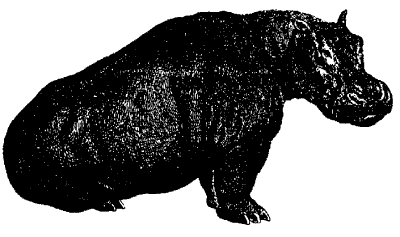 |
Science Frontiers ONLINE No. 124: Jul-Aug 1999 |
|
|
Late Survival Of The Kilopilopitsofy And Kidoky
Cryptozoological articles are rare in the mainstream science literature, but a 1999 number of the American Anthropologist has surprised us with an investigation of two mystery mammals on Madagascar.
In 1995, D.A. Burney and Ramilisonia interviewed elderly natives about their knowledge of the Kilopilopitsofy and Kidoky. Both of these animals are mentioned in the historical accounts and folklore of Madagascar between the mid-1600s and late 1800s. The testimonies collected by Burney and Ramilisonia enabled them to provide tentative indentifications of these two mystery animals, both of which may still survive today.
The Kilopilopitsofy
"A striking feature of the accounts of this mysterious animal is the consistency of the details. All the accounts we have collected stress that the animal is nocturnal, grunts noisily, and flees to water when disturbed. Likewise, there is general agreement that it is cow-sized, hornless, dark in color, and has a large mouth with big teeth."
These data agree with the old descriptions of the mangarsahoc (1661), the tsy-aomby-aomby (1882), and the Ombyrano (1912). One animal fits all of these accounts: the dwarf hippopotamus (Hippo potamus lemerlie, supposedly extinct for over 1,000 years.
The Kidoky
"This animal's description is decidedly lemur-like. It was compared to the sifaka by all the interviewees who described it, although all insisted that it was not the same animal... It is much larger...perhaps 25 kg. It is usually encountered on the ground and may flee on the ground rather than taking to the trees...Its whooping call is suggestive of an indri."
The Kidoky is probably the giant aboreal lemur (Palaeopropithecus), known only from subfossils 1,000 or more years old.
(Burney, David A., and Ramilisonia; "The Kilopilopitsofy, Kidoky, and Bokyboky: Accounts of Strange Animals from Belo-sur-mer, Madagascar, and the Megafaunal 'Extinction Window'," American Anthropologist, 100:957, 1999.)
Comment. The Bokyboky mentioned in the article's title definitely does survive under the name: Malagsay Narrow-Striped Mongoose. Reference: Walker's Mammals of the World.
 | What the kilopilopitsofy probably looks like. |